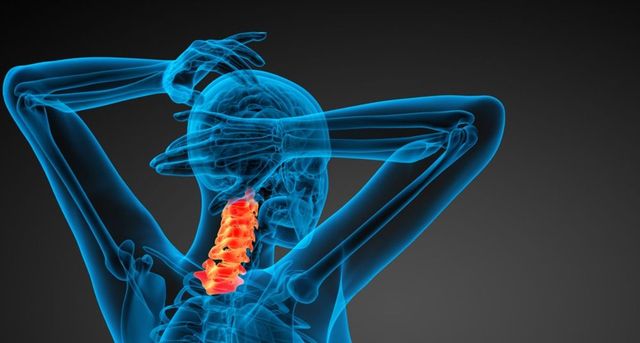All About Spinal Decompression: Reliable Solutions for Spinal Health and Wellness
Spinal decompression treatment has actually emerged as a feasible option for those looking for remedy for different spinal issues. This non-invasive treatment targets the origin of pain, such as herniated discs and persistent pain in the back. Comprehending its applications and concepts can shed light on how it promotes total spinal health and wellness. What are the certain advantages and techniques associated with spinal decompression? Checking out these inquiries might reveal important insights for individuals considering this strategy.
Recognizing Spinal Decompression Therapy
What specifically is spinal decompression treatment, and exactly how does it function? Spinal decompression treatment is a non-invasive therapy focused on soothing stress on the spine's nerves and discs. It utilizes customized devices to carefully extend the spine, producing adverse pressure within the discs. This negative pressure helps with the repositioning of herniated or protruding discs and encourages the influx of necessary nutrients and liquids into the influenced areas.
Patients normally lie on a motorized table that supports the spine while enabling regulated grip. The therapy can target different spinal problems, including persistent back sciatic nerve pain, pain, and disc deterioration. Procedure are usually pain-free and can last from 30 to 45 minutes. While several people experience immediate relief, a collection of sessions might be advised for ideal outcomes. Overall, spinal decompression therapy stands for a holistic method to spinal health and wellness, aiming to recover function and advertise total wellness.
The Scientific Research Behind Spinal Decompression
Spinal decompression therapy is grounded in principles of biomechanics and physical reaction to pressure changes within the spinal column. This non-invasive therapy intends to minimize spinal disc stress, which can add to pain and discomfort. By utilizing grip strategies, spinal decompression produces an adverse stress setting within the intervertebral discs. This negative pressure promotes the repositioning of herniated or protruding discs and advertises the influx of necessary nutrients and liquids, aiding in the healing process.
Research indicates that spinal decompression can lead to a boost in disc elevation, which may minimize nerve root compression. Family Chiropractic. The treatment likewise aims to boost spinal alignment, potentially enhancing total biomechanical function. Understanding these scientific concepts assists professionals apply spinal decompression efficiently, guaranteeing that individuals receive targeted treatment customized to their details spinal problems. Generally, the science behind spinal decompression underscores its importance in the area of spinal wellness
Advantages of Spinal Decompression
While numerous people seek alleviation from chronic pain in the back, the benefits of spinal decompression expand beyond plain pain monitoring. This therapeutic method aids in enhancing spinal health and wellness by promoting proper positioning and minimizing pressure on intervertebral discs. Boosted circulation is another remarkable benefit, as spinal decompression facilitates better blood flow to the spine, beneficial surrounding tissues and increasing recovery procedures.
In addition, spinal decompression can bring about enhanced flexibility and enhanced variety of activity, enabling individuals to involve in daily tasks with better ease. Many clients report enhanced general well-being and a decrease in tension degrees, as easing pain in the back can significantly boost lifestyle.
Moreover, spinal decompression may function as a safety net, helping to avoid future spinal issues by preserving perfect spinal function. In general, the diverse advantages of spinal decompression highlight its importance in promoting long-lasting spinal wellness and health.
Sorts Of Spinal Decompression Methods
Numerous techniques exist for spinal decompression, each designed to relieve stress on the spine and boost general wellness. One common technique is mechanical spinal decompression, which uses a traction table to delicately extend the spine, creating adverse stress in the discs. Another approach is manual spinal decompression, carried out by a chiropractic doctor, who applies regulated pressure to realign the spine and ease stress.
Furthermore, there are non-invasive treatments such as inversion therapy, where individuals hang upside-down to promote spinal prolongation. Additionally, exercises that concentrate on strengthening core muscular tissues can add to spinal assistance and decompression.
Lastly, some specialists make use of innovative techniques like spinal decompression tools, which are crafted to give targeted alleviation. Each technique intends to enhance spinal positioning, lower pain, and enhance mobility, accommodating the distinct requirements of people seeking alleviation from spinal discomfort.
What to Expect Throughout a Spinal Decompression Session
During a spinal decompression session, individuals can anticipate a series of prep work actions created to assure their comfort and safety. The session itself normally involves a mix of healing strategies targeted at minimizing pressure on the spine. Recognizing these aspects can assist individuals feel more at convenience prior to and throughout the treatment.
Therapy Preparation Tips
As patients get ready for a back decompression session, they can expect a carefully structured process made to ensure their convenience and safety. Originally, specialists will certainly conduct a thorough evaluation, reviewing case history and existing signs and symptoms to tailor the therapy. People might be encouraged to use comfortable clothes and eliminate any type of fashion jewelry that might conflict with the procedure. It's also common for clinicians to discuss the technology and techniques made use of in spinal decompression, guaranteeing patients comprehend the process and its benefits. Additionally, patients may be instructed to moisturize appropriately prior to the session. This prep work aims to create a favorable atmosphere for spinal wellness, allowing patients to really feel safe and secure and informed regarding their treatment journey.
Session Experience Introduction
A back decompression session typically unravels in a calm and controlled atmosphere, where patients are positioned conveniently on a specialized table developed for the procedure. The practitioner starts by describing the procedure, guaranteeing the patient recognizes each step. As soon as worked out, gentle grip is used to the spine, developing area in between the vertebrae to relieve stress on the discs and nerves. Clients may really feel a mild extending feeling, however pain should be very little. Procedure normally last regarding 30 to 45 minutes, throughout which the specialist checks the patient's response. Later, patients might receive referrals for follow-up care or workouts to improve results. Overall, the experience aims to promote leisure and recovery, fostering a sense of health.
Who Can Benefit From Spinal Decompression?
Who stands to get one of the most from spinal decompression treatment? Individuals experiencing from persistent pain in the back, herniated discs, or degenerative disc disease are main candidates for this therapy. Those experiencing sciatica or numbness in the limbs might likewise profit significantly, as spinal decompression can aid relieve stress on the spinal nerves. On top of that, athletes recuperating from injuries or individuals with postural problems commonly discover alleviation with this therapy.
Furthermore, people looking for a non-invasive option to surgical treatment for their spinal wellness problems may think about spinal decompression as a sensible alternative. It is crucial for prospective prospects to talk to healthcare experts to determine the relevance of this treatment for their specific problems. In general, spinal decompression therapy can supply substantial benefits for a diverse range of people, boosting their general lifestyle and promoting much better spinal health.
Tips for Maintaining Spinal Health After Treatment
After going through spinal decompression treatment, preserving spinal health and wellness is important for long-term wellness. Carrying out normal workout routines, being mindful of pose, and developing an ergonomic work area can significantly add to a healthier spine. These methods not only sustain recovery but additionally help stop future problems.

Normal Exercise Regimens
Maintaining spinal health and wellness following treatment is essential for long-term recovery and overall wellness. Routine workout regimens play an important duty in this process. Participating in low-impact activities such as swimming, strolling, and cycling can aid enhance the muscular tissues supporting the spine, enhance versatility, and boost overall flexibility. Integrating core-strengthening workouts is specifically helpful, as they offer stability and assistance to the spine. In addition, gentle stretching routines can ease stress and promote relaxation in the back muscle mass. It is vital to speak with a medical more info care specialist before starting any type of brand-new workout routine to assure it aligns with private healing objectives. Consistency in these activities promotes an aggressive method to spinal health, aiding in the prevention of future issues.
Position Understanding Methods
A strong awareness of position can considerably affect spinal health and wellness during the recuperation process. Individuals must consciously preserve an upright placement, making sure that the head is lined up with the spine and shoulders are relaxed. Frequently signing in with one's stance throughout the day can aid enhance excellent habits. When sitting, using a helpful chair that promotes lumbar support is crucial. In addition, meaning extended periods calls for weight distribution between both feet and involving the core muscles. Practicing gentle stretches and mobility exercises can additionally improve recognition of pose. Mindfulness methods, such as deep breathing, can help in recognizing tension and promoting leisure in the back. Implementing these methods cultivates an aggressive strategy to spinal health post-treatment.
Ergonomic Office Setup
While an ergonomic work space might seem like a high-end, it is essential for those recouping from spinal concerns. A well-structured atmosphere can significantly aid in maintaining spinal wellness. Secret elements consist of a chair with back support, which urges appropriate position, and a workdesk height that allows joints to rest at a 90-degree angle. Additionally, computer system displays need to go to eye degree to decrease neck pressure. Routine breaks to extend and stand are crucial, as long term sitting can exacerbate pain. Foot rests can additionally boost blood circulation and lower pressure on the reduced back. By prioritizing these ergonomic principles, people can produce a helpful work area that fosters recovery and promotes long-lasting spinal wellness, inevitably boosting total efficiency and convenience.
Frequently Asked Concerns
Just How Long Does Spinal Decompression Treatment Generally Require To Program Results?
Spinal decompression therapy usually takes numerous weeks to show noticeable results. Most clients experience improvement within 4 to 6 weeks, depending on individual problems and adherence to the advised therapy strategy outlined by healthcare experts.
Are There Any Type Of Adverse Effects Related To Spinal Decompression Therapy?
Spinal decompression therapy might trigger light side results, such as short-term pain, muscular tissue convulsions, or soreness after therapy. However, these symptoms are usually short-lived and solve swiftly, permitting people to proceed their treatment successfully.
Can Spinal Decompression Treatment Be Done in your home?

Is Spinal Decompression Safe for Pregnant Ladies?
Spinal decompression is usually thought about harmful for pregnant women because of possible risks. It is essential for pregnant moms to get in touch with health care professionals prior to undertaking any spinal therapies to assure the safety and security of both mom and baby.
Exactly how Frequently Should I Undertake Spinal Decompression Therapy for Ideal Results?
Usually, individuals should undertake spinal decompression therapy 2 to three times a week for best results. The regularity may differ based on specific problems and ought to be determined by a healthcare professional.
Spinal decompression therapy is based in principles of biomechanics and physiological response to stress changes within the spinal column. Understanding these scientific concepts helps professionals use spinal decompression successfully, guaranteeing that individuals receive targeted treatment customized to their particular spinal conditions. Spinal decompression might offer as a preventative step, helping to avert future spinal problems by preserving optimal spinal function. Individuals looking for a non-invasive alternative to surgical treatment for their spinal health issues might think about spinal decompression as a feasible option. After undergoing spinal decompression therapy, preserving spinal health is important for long-term health.